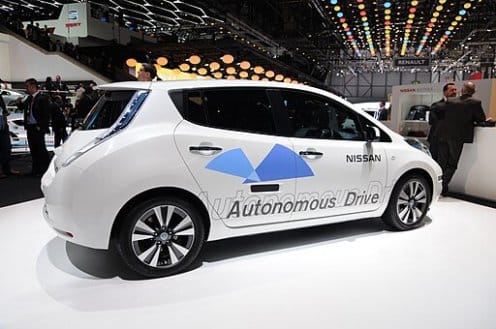Automotive technologies are constantly evolving. In the last 10 years alone, we’ve seen safety and general driving features such as in-built sat nav, parking sensors, and lane assist become standard in even entry level trims. Where once, connected infotainment systems were for the highest-spec models, now these come as standard across a range of makes and designs.
One innovation that’s proving to be a major contender is autonomous vehicles. Where once we thought self-driving cars were a futuristic idea, now they’re becoming a reality.
While we’re not quite at the stage where we can use them on the roads yet, progress is being made. The UK Government states we could see autonomous motors as early as 2025. Before they become part of our everyday lives, it’s worth looking at the advantages of these vehicles, along with the challenges that need to be addressed.

The promise of safety and reduced accidents
One of the main selling points for these vehicles is that they have the potential to be safer than standard cars. Thanks to responsive sensors and intuitive tech, they can reduce the risks that come with human error. From not checking mirrors to missing cars in the driver’s blind spot, there are common mistakes made by humans that lead to accidents.
Sensors used in self-driving vehicles will pick up on obstructions like these, making roads safer.
However, there are doubts about the tech picking up on everything. Some people might prefer having that human element in place in order to add peace of mind.
There is the possibility that tech goes wrong. Therefore, having a manual driving option in place, plus things like insurance, can be an added security measure. Cover like contract hire gap insurance could still be something motorists consider, even if they have a self-driving vehicle.
Environmental impact and traffic congestion
As well as taking charge of driving, autonomous vehicles could potentially be able to navigate traffic, intuitively avoiding congested areas and optimising traffic flow. This could potentially make the rush hour less stressful and ease those busy periods.
Poor driving habits can be less efficient, using more fuel than necessary. But as these automated cars are moving in line with the speed limit and braking and accelerating at the optimum levels, they are able to drive more efficiently. This, in turn, could reduce carbon emissions caused by cars on the roads.
Mobility for all
Done well, autonomous vehicles could make driving more accessible than ever before. For those who are unable to drive due to disabilities or mobility issues, self-driving cars open up a world of possibilities.
Things to note
We might not be there just yet. But in time, we might find that self-driving cars outnumber manual vehicles. How this looks will depend on the way we adapt to the new tech.

